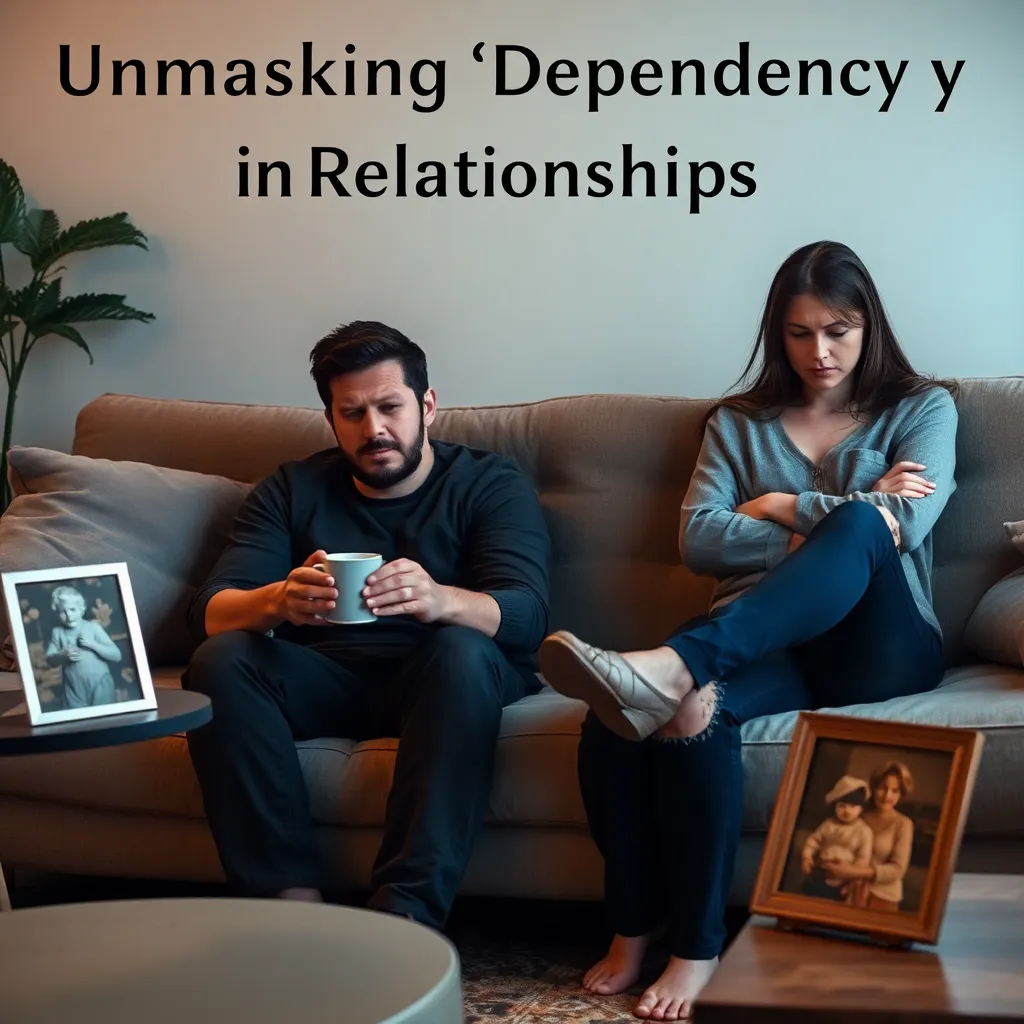Navigating family dynamics can be challenging, especially when narcissistic behaviors are involved. If you’ve ever felt confused, hurt, or manipulated by a family member’s actions, you’re not alone, and understanding these complex interactions is a crucial step toward healing and clarity.
Recognizing the subtle tactics narcissists use on their family members can empower you to set healthier boundaries and protect your well-being. This article delves into 12 specific clues that reveal how narcissists may exploit those close to them, offering insights into their behavior and its impact.
By the end, you’ll gain a deeper understanding of these dynamics, equipping you with practical strategies to respond more effectively. With empathy and awareness, you can begin to reclaim your peace and foster healthier relationships within your family.
1. Recognizing Narcissistic Behavior

Understanding how to recognize narcissistic behavior is crucial for protecting your emotional well-being. Often, narcissists can be incredibly charming, making it difficult to see the underlying manipulation early on.
Imagine someone who constantly shifts conversations to focus on themselves, disregarding your feelings. This self-centered behavior is a classic sign of narcissism in a relationship, often leaving family members feeling unseen and unheard.
Experts note that narcissists frequently use tactics such as gaslighting to control and confuse others. Gaslighting involves making you doubt your own perceptions and memories, leading to a sense of dependency on the narcissist for reality checks.
When a family member repeatedly dismisses your concerns or feelings, this could be another red flag. Such dismissals are often subtle but powerful, slowly eroding your confidence and autonomy over time.
Pay attention to whether you feel anxious or drained after interactions with this person. Consistently feeling this way may indicate you are being emotionally manipulated or exploited.
2. Manipulation through Emotional Traps

Narcissists often use emotional traps to keep family members under their influence. These traps can manifest as guilt trips, where the narcissist makes their loved ones feel responsible for their happiness or failures. In many families, you might see a parent who constantly reminds their child of the sacrifices they’ve made, subtly suggesting the child owes them unwavering loyalty.
It’s common for narcissists to employ fear as a tool to manipulate emotions. They may threaten to withdraw love or support unless their demands are met, creating a constant state of anxiety. For instance, a sibling might say, “If you don’t do what I want, I’ll never speak to you again,” leaving the other sibling in a state of emotional turmoil.
Another tactic involves playing the victim to elicit sympathy and control the narrative. By portraying themselves as mistreated or misunderstood, narcissists can shift the focus away from their own toxic behavior. An example is a partner who always blames others for their outbursts, claiming, “You know how hard my life has been; how can you not understand?”
Understanding these patterns is crucial to breaking free from a narcissist’s hold. Recognizing these emotional traps allows family members to reclaim their power and establish healthier dynamics. Take this insight to heart as you navigate your personal relationships and strive for a balance that respects your emotional health.
3. Gaslighting: Twisting Reality

Narcissists often engage in a tactic known as gaslighting, where they systematically distort reality to undermine the perceptions of their family members. Imagine a scenario where your partner insists that you never discussed an important decision, leaving you questioning your own memory. This creates a cycle of self-doubt that can erode trust in one’s own thoughts and feelings.
Another instance might occur when a narcissist denies having said something hurtful, even when confronted with evidence. This type of interaction can make you feel like you’re losing your grip on what is real, fostering dependence on the narcissist for “clarity.” This can lead to a troubling dynamic where the narcissist becomes the sole arbiter of truth in the relationship.
Experts suggest that gaslighting is a potent tool for maintaining control, as it subtly shifts the balance of power. According to Dr. Robin Stern, author of “The Gaslight Effect,” victims often end up doubting their sanity and become more reliant on the abuser. Recognizing these signs early can help you regain your sense of self and start setting firm boundaries.
It’s crucial to keep a journal of events as they occur to maintain a clear perspective. Documenting interactions can serve as a valuable resource to validate your experiences and restore your confidence. This simple act of writing can be empowering when facing manipulative behavior.
Remember, your perceptions and feelings are valid, and you deserve to be in a relationship where they are respected. Awareness is the first step towards regaining control and fostering healthier interactions. By recognizing gaslighting, you’re taking a powerful step toward reclaiming your autonomy.
4. Exploiting Family Guilt

Narcissists often capitalize on family guilt to maintain control over their loved ones. They may remind you of past sacrifices or mistakes, subtly suggesting you’re forever indebted to them.
In family gatherings, a narcissist might bring up stories that highlight their perceived martyrdom. By doing so, they create an environment where family members feel obliged to cater to their needs.
Imagine a sibling who consistently reminds you of the time they helped you financially. This can lead to an unending cycle of feeling guilty and indebted, even when you’ve already repaid that favor in kind.
It’s important to establish boundaries and recognize when guilt is being used as a tool against you. Communicating openly with family members about your feelings can help dissolve this manipulative tactic.
By acknowledging the ways in which guilt is exploited, you can begin to reclaim your emotional freedom. Remember, a healthy family dynamic is built on mutual respect and genuine care, not guilt and manipulation.
5. Isolation Tactics and Control

Narcissists often use isolation tactics to gain control over family members, subtly cutting them off from external support. They may discourage you from spending time with friends or family, making you feel guilty for wanting to maintain those connections.
In many cases, they manipulate situations to make it seem like they are the only ones who truly understand or care for you. This creates a dependency that is hard to break, as the family member may start to believe that their world revolves solely around the narcissist.
It’s crucial to recognize these patterns of control early on, as they can lead to a sense of powerlessness and isolation. If you notice someone consistently undermining your relationships with others, it’s vital to assess whether they have your best interests at heart.
Setting firm boundaries can help you regain control over your own life. Make a conscious effort to maintain and prioritize other relationships that offer healthy support and understanding.
By consciously nurturing these external connections, you protect yourself from the isolating tactics of a narcissist. Remember, a loving relationship should enhance your life, not diminish your freedom or self-worth.
6. Using Charm to Disarm

In the intricate web of family dynamics, a narcissist often uses their innate ability to be exceptionally charming as a tool to gain control. This charm isn’t just a personality trait; it’s a strategy that makes family members lower their defenses and trust them implicitly.
Consider a scenario where a narcissistic sibling suddenly becomes the life of the party, showering everyone with compliments and laughter. This sudden burst of charm can make other family members forget past grievances, allowing the narcissist to subtly manipulate future interactions.
Experts note that this use of charm can create an emotional confusion, leaving family members unsure of the narcissist’s true intentions. It’s important to recognize that while their charm can be disarming, it’s crucial to remain aware of any underlying patterns of manipulation.
To navigate these tricky situations, establishing firm personal boundaries is essential. When you understand the charm for what it is, you can protect yourself from being swayed by their seemingly genuine behavior.
Ultimately, while charm can serve as a temporary distraction from underlying issues, recognizing it as a tactic can empower family members to maintain healthier relationships. This awareness can lead to more authentic and less manipulative family interactions, fostering a supportive environment.
7. Insecurity as a Weapon

Narcissists often use their family members’ insecurities as a weapon to maintain control. This manipulation can be subtle, such as offhand comments questioning a person’s worth or abilities, leaving lasting emotional scars.
Imagine a scenario where a sibling constantly reminds you of your past failures, subtly reinforcing a narrative of inadequacy. Over time, such negative reinforcement erodes self-esteem, making it easier for the narcissist to assert dominance and influence.
Experts suggest that understanding this tactic is crucial for regaining personal power. By recognizing these manipulative behaviors, individuals can begin to set boundaries and seek support from trusted friends or professionals.
An effective way to counteract this weaponized insecurity is to practice self-compassion and remind yourself of your true strengths. This approach not only helps in healing but also diminishes the narcissist’s hold over you.
8. The Blame-Shifting Game

Narcissists are adept at playing the blame-shifting game, where they expertly divert attention away from their own faults. In many families, this tactic manifests when a narcissist blames others for their own mistakes, creating an environment of confusion and doubt.
Imagine a scenario where a narcissist consistently arrives late to family gatherings, yet accuses others of being disorganized or not communicating plans effectively. This deliberate shifting of blame not only distorts reality but also undermines the confidence of other family members, making them question their own perceptions.
Experts suggest that such behavior is a common tactic used by narcissists to avoid taking responsibility. Dr. Emily Jacobs, a renowned psychologist, explains that this is a way for narcissists to maintain their image of perfection, as admitting fault could shatter their carefully constructed façade.
To counteract this, it’s essential to develop a strong sense of self-awareness and establish clear boundaries.
By recognizing these patterns, family members can protect themselves from emotional manipulation. The key takeaway is to remain anchored in your truth, resist the urge to internalize unfounded blame, and preserve your peace of mind amidst the chaos.
9. Feigning Victimhood for Sympathy

In the intricate dynamics of family relationships, a narcissist may cleverly exploit the role of the victim to garner attention and sympathy. This tactic often leaves family members feeling guilty and responsible for the narcissist’s perceived suffering.
Consider a scenario where a narcissistic sibling constantly complains about how they are being misunderstood or mistreated by the family. By painting themselves as the perpetual underdog, they successfully divert the family’s focus from their own manipulative behaviors.
Experts suggest that this feigned victimhood often serves as a smokescreen. It’s a way to deflect accountability and maintain control within the family dynamic.
When faced with this manipulation, it’s crucial to maintain your emotional boundaries and not be swayed by guilt. Understanding their tactic can help you respond with empathy, yet remain firm in your perspective.
By seeing through the facade of victimhood, family members can reclaim their peace of mind and emotional balance. The key takeaway is to recognize the signs and protect oneself from undue emotional manipulation.
10. Creating Dependency in Relationships

Narcissists often create a sense of dependency in relationships to maintain control over family members. By portraying themselves as the only source of happiness or stability, they make it difficult for others to envision life without their presence. In many cases, they might subtly undermine their family’s confidence, leading them to second-guess their decisions and seek validation from the narcissist. This tactic ensures that family members remain reliant on the narcissist for emotional and sometimes financial support.
Consider a scenario where a narcissist constantly criticizes a loved one’s choices, suggesting that they can’t succeed without guidance. Over time, the family member may start to believe that their autonomy is inadequate, further deepening their dependency. According to relationship experts, this behavior is a strategic way to ensure that the narcissist remains central to the family dynamic. By fostering a sense of inadequacy, they keep the attention and power firmly in their grasp.
Family members may also find themselves in a cycle of trying to please the narcissist, believing that their approval is crucial. This endless loop can be exhausting and emotionally draining, ultimately altering the individual’s self-perception and self-worth. Experts suggest breaking this cycle by gradually building independence through small, manageable steps. For instance, seeking outside perspectives from trusted friends or a therapist can help regain a balanced view of the situation.
Ultimately, recognizing these patterns and actively working to rebuild confidence can help family members regain control over their lives. This transformation not only empowers them but also diminishes the narcissist’s hold. The key takeaway is to nurture self-reliance and seek support systems that reinforce a healthy, balanced perspective on relationships.
11. Undermining Family Bonds Subtly

Narcissists often exploit the subtle art of undermining family bonds, creating discord without raising suspicion. They may use seemingly innocent remarks to sow doubt and mistrust among family members, gradually eroding the foundation of familial unity.
A common tactic is to plant seeds of doubt by questioning the intentions or actions of other family members, which can lead to unnecessary conflict. Over time, these subtle jabs can make individuals feel isolated, fostering an environment where the narcissist becomes the primary source of connection and validation.
In many cases, a narcissist might portray themselves as the victim to gain sympathy, further driving a wedge between family members. By manipulating perceptions, they can control narratives within the family, making it harder for others to unite against their tactics.
12. Setting Boundaries for Protection

Recognizing the need to set boundaries is crucial when dealing with narcissists who undermine family bonds. Imagine being in a family gathering where a narcissist subtly dismisses your accomplishments; it’s essential to have a strategy to protect your emotional well-being.
Start by clearly defining what behaviors are unacceptable and communicate these boundaries assertively. When a narcissist tries to manipulate a conversation, calmly express that you won’t entertain any negativity, reinforcing your limits.
Implementing boundaries isn’t just about saying “no”; it’s about reinforcing your self-worth and ensuring your family interactions are healthy. Consider seeking support from a therapist to gain tools for maintaining these boundaries without feeling guilt or fear.
As family dynamics can be complex, remember that setting boundaries isn’t a one-time fix; it requires consistent reinforcement. If a narcissist disregards your boundaries, don’t hesitate to remove yourself from the situation to uphold your mental peace.
In conclusion, setting boundaries with a narcissist is a vital step toward preserving your emotional health and the integrity of your family bonds. By maintaining these boundaries, you empower yourself and foster a healthier family environment.
Conclusion: Creating Beautiful Outdoor Spaces
Understanding how narcissists exploit family members can be transformative for those entangled in such dynamics. This article outlines 12 key concepts: manipulation through charm, emotional invalidation, gaslighting, triangulation, playing the victim, leveraging guilt, inconsistency, undermining self-esteem, monopolizing conversations, boundary violations, projecting blame, and emotional withdrawal. Recognizing these patterns is the first step towards reclaiming your peace and autonomy.
As an immediate step, take a moment to reflect on your relationships and identify any signs of these behaviors. Consider journaling your observations to gain clarity and perspective. This self-awareness is crucial for setting boundaries and fostering healthier interactions.
To ensure you have these insights at your fingertips, save or bookmark this article. It can serve as a valuable reference as you navigate and strengthen your relationships.
Remember, understanding and addressing these dynamics can lead to more fulfilling and balanced connections. With this knowledge, you are well-equipped to foster an environment of respect and empathy. Embrace this journey towards healthier relationships, and empower yourself to create the harmonious family life you deserve.
